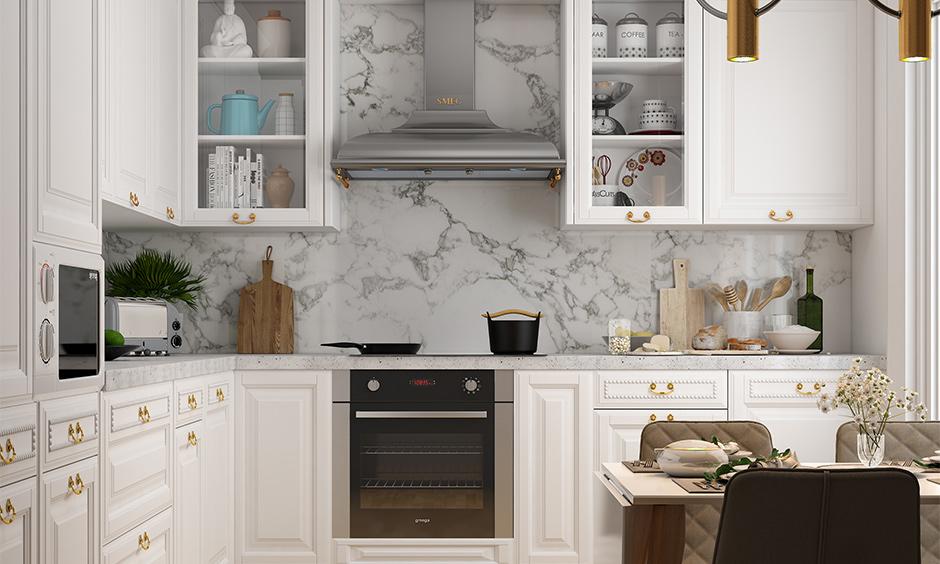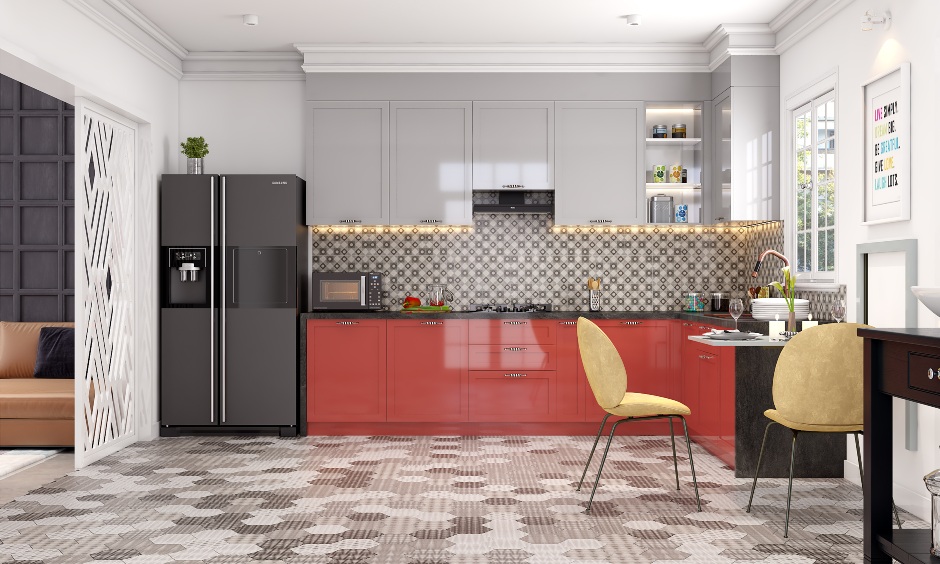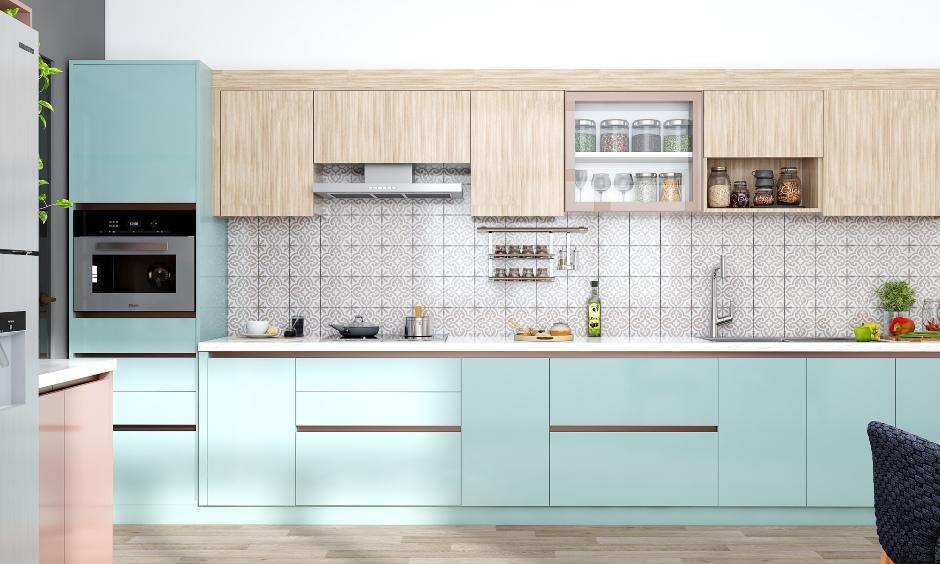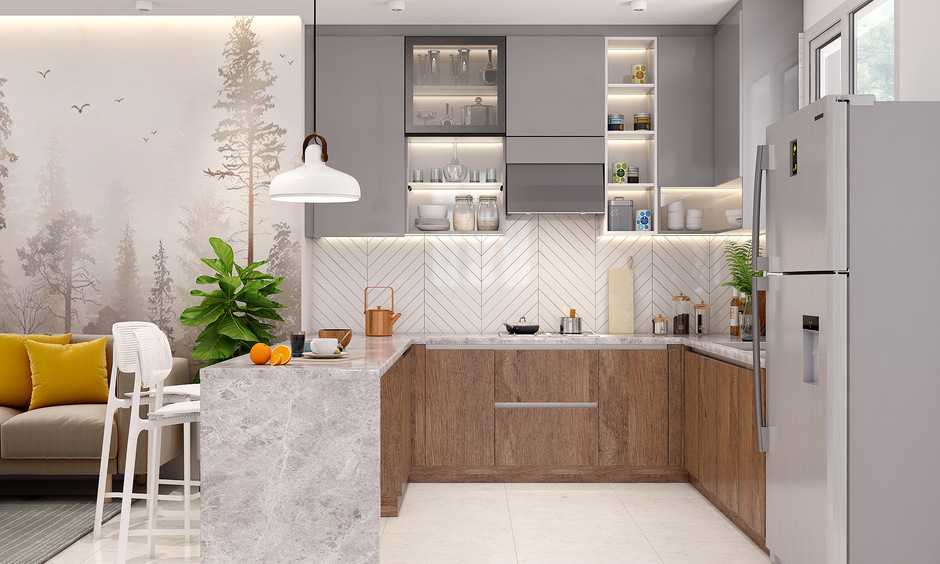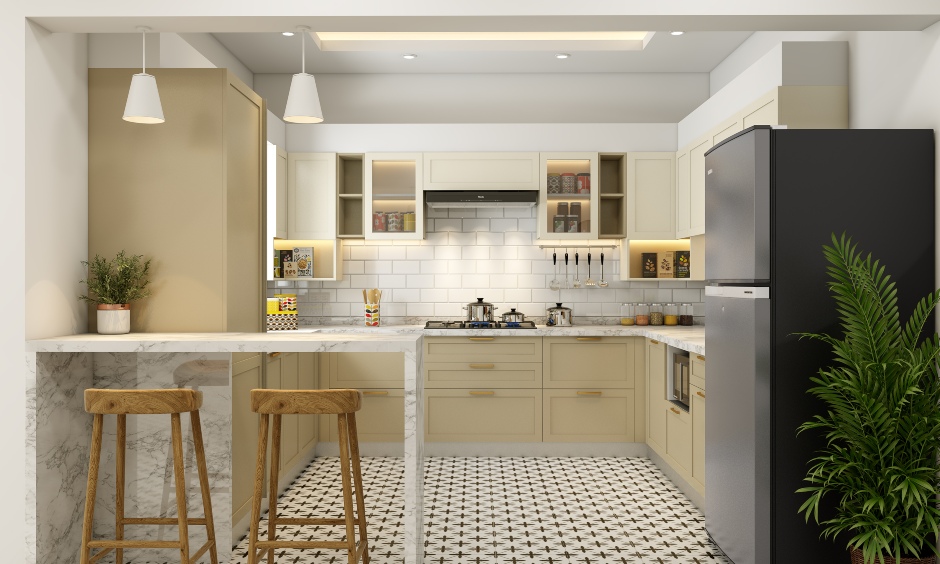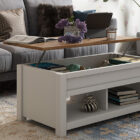Discover the rising trend of separate wet and dry kitchens—and how to design yours for maximum functionality, elegance, and ease.
If you have ever found yourself longing for a kitchen that can juggle both heavy-duty cooking and chic entertaining, the wet and dry kitchen concept is your dream solution. Especially popular in modern Asian homes and gaining traction in HDBs, this clever layout divides your kitchen into two zones: one for serious cooking (wet) and one for light prep or socialising (dry).
Not only does this approach offer visual appeal, but it also brings practicality to the forefront, especially in homes where space is limited and cleanliness is a must. Let’s explore the difference between dry kitchen and wet kitchen zones, and how you can make the most of each.
Advantages of a Wet and Dry Kitchen Layout
Why go through the trouble of designing two kitchens instead of one? Here are the game-changing benefits of embracing a wet and dry kitchen layout plan:
- Improved Cleanliness: Cooking with oil and spices can get messy. Keeping these activities in the wet kitchen helps maintain a clean, sleek, dry space at all times.
- Better Odour Control: Wet kitchens are often enclosed and ventilated, preventing cooking smells from spreading to the rest of your home.
- Enhanced Functionality: With designated zones for different tasks, everything becomes more efficient—from meal prep to cleanup.
- Aesthetic Versatility: Your dry kitchen can reflect your interior design style, be it minimalist, rustic, or contemporary, without worrying about practical constraints.
- Social Engagement: Want to entertain while preparing a cheese platter or mixing cocktails? The dry kitchen becomes your stylish, welcoming hub.
- Optimised Storage: Customise cabinetry and storage in each zone based on function—heavy cookware in the wet kitchen, elegant dishes in the dry.
This dual-zone approach is especially beneficial for HDB wet and dry kitchen designs, where maximising limited space is crucial.

Designing Your Wet Kitchen: Functionality First
Your wet kitchen is the engine room of your culinary adventures. It’s where you chop, fry, boil, and bake, so practicality must take the lead here.
Key Elements to Consider for Wet and Dry Kitchen Concept:
- Materials That Last: Go for easy-to-clean, water- and heat-resistant surfaces like stainless steel, quartz, or ceramic tiles. Avoid porous countertops that can stain.
- Powerful Ventilation: A quality cooker hood or exhaust fan is a must to deal with the steam, smoke, and odours from heavier cooking.
- Sensible Storage: Install open shelves or deep drawers for pots, pans, and everyday cooking utensils. Overhead cabinets can also help store spices and dry goods.
- Water Efficiency: Opt for a large, deep sink and consider installing a dishwasher to make cleanup easier and efficient.
- Lighting & Layout: Bright task lighting is essential. Use an L-shaped or U-shaped layout if space allows to ensure smooth movement during cooking.
For HDB wet and dry kitchen designs, consider glass partitions or bi-fold doors to create a sense of openness while keeping functions separated.

Designing Your Dry Kitchen: Style and Social Hub
Your dry kitchen should be an expression of your style, a place where you can sip your morning coffee, prep light snacks, and entertain effortlessly.
Here’s how to elevate this space into an efficient wet and dry kitchen design:
- Design-Led Materials: Use wood veneers, stone finishes, or matte laminates for a warm and welcoming vibe. The dry kitchen is your chance to go luxe.
- Integrated Appliances: Think microwave ovens, coffee machines, wine coolers, or even a toaster—all built seamlessly into the cabinetry for a clutter-free look.
- Multipurpose Islands: A kitchen island can serve as a breakfast bar, a food-prep surface, and even a mini cocktail station during parties.
- Storage Meets Display: Incorporate open shelving or glass cabinets to display fine tableware, cookbooks, or art pieces.
- Lighting for Ambience: Layered lighting works best here—add pendant lights, under-cabinet lighting, and dimmable LEDs for mood control.
When done right, the dry kitchen and wet kitchen setup feels like two rooms with a single purpose: supporting your lifestyle and adding value to your home.

Integration Strategies: Connecting the Wet and Dry Kitchen Layout Design
The real beauty of a dual kitchen lies in its integration. You want both spaces to function independently, yet visually and spatially flow together.
Smart Integration Tips:
- Choose the Right Divider: A wet and dry kitchen divider could be a sliding glass door, frosted glass panel, wooden lattice, or even a partition wall with a pass-through window. It should offer separation without blocking light.
- Cohesive Design Palette: Stick to a consistent theme—use matching hardware, complementary colours, and similar cabinetry designs to tie both areas together.
- Functional Transition Zones: Consider a shared pantry or countertop that bridges both areas, allowing ease of movement and accessibility.
- Flexible Open Concepts: In larger homes or open-concept layouts, a semi-open divider or retractable wall can help the spaces adapt to various occasions.
With careful planning, your dual kitchen design can strike the perfect balance between efficiency and elegance.

Luxury Modular Kitchen Designs
Common Mistakes to Avoid in Your Wet And Dry Kitchen
While the dual-kitchen layout is highly functional, there are some design pitfalls to steer clear of:
- Neglecting Airflow in the Wet Kitchen: No matter how separate the zones are, poor ventilation can ruin the experience.
- Overstyling the Dry Kitchen: Remember, it still needs to serve some practical functions—too much decor and too little counter space can backfire.
- Ignoring Workflow Logic: Keep a logical flow between storage, prep, cooking, and cleaning zones across both kitchens.
- Mismatch in Materials: Using vastly different finishes or themes between the two zones can make your kitchen look disjointed.
- Underestimating Lighting Needs: Poorly lit spaces, especially in the wet kitchen, can lead to a frustrating cooking experience.
Avoid these common errors to fully enjoy the benefits of a separate wet and dry kitchen without compromising on beauty or utility.

Choosing the Right Wet and Dry Kitchen Divider
One of the most important elements in a wet and dry kitchen design is the divider that separates the two zones. This feature not only creates a clear boundary between the wet and dry areas but also plays a key role in how the space functions and looks.
For HDBs and smaller homes, a glass wet and dry kitchen divider is a smart choice; it maintains an open feel while still containing smells and mess. Sliding doors, folding panels, or half-height walls can also offer flexibility. Want a more aesthetic approach? Try a wooden slatted divider or even a breakfast bar counter that bridges the zones subtly.
The key is to choose a divider that complements your home’s style while supporting the wet and dry kitchen concept efficiently.

Customising a Wet and Dry Kitchen for HDB Homes
Designing a wet and dry kitchen in an HDB flat requires a strategic approach due to space limitations, but it’s achievable with the right layout and planning. More and more homeowners are adopting this style for better cleanliness and cooking convenience.
Start by mapping out your dry and wet kitchen layout plan based on natural light, ventilation points, and your cooking habits. Use sliding glass partitions to separate areas without sacrificing openness. Go vertical with storage, and integrate multipurpose counters to save space. Choose materials that are compact, durable, and moisture-resistant.
When executed well, an HDB wet and dry kitchen design can provide all the benefits of a dual-zone kitchen, efficiency, style, and modern appeal, even in compact spaces.

The wet and dry kitchen concept isn’t just a fleeting design trend; it’s a thoughtful solution to the evolving needs of the modern homeowner. By separating function from form and cleanup from connection, it creates a harmonious blend of efficiency and elegance.
Whether you are renovating an HDB flat or building your dream home from scratch, adopting this dual kitchen design allows you to cook with freedom, entertain with flair, and live with ease.
From understanding the difference between a dry kitchen and a wet kitchen to planning a cohesive kitchen layout plan, you now have all the tools to revolutionise your kitchen experience. Confused about where to start? Talk to the experts at DesignCafe for more!
Also, Check Out
FAQs
1. What exactly is a ‘wet kitchen’ and a ‘dry kitchen’?
A wet kitchen is designed for heavy cooking that involves oil, steam, and intense aromas—think stir-frying, deep-frying, boiling, and washing up. It typically includes a stove, sink, robust ventilation, and durable materials for easy cleaning.
A dry kitchen, on the other hand, is used for light meal preparation like chopping fruits, making coffee, baking, or assembling snacks. It’s often styled to blend in with the living or dining space and may include appliances. Understanding the difference between a dry kitchen and a wet kitchen is the first step toward creating a more efficient and stylish home.
2. Why should I consider having a wet and dry kitchen?
There are several compelling reasons to opt for a wet and dry kitchen layout:
- Keeps cooking mess, smells, and noise contained in the wet kitchen.
- Maintains a neat, clutter-free appearance in the dry kitchen—perfect for hosting guests.
- Improves organisation with separate zones for heavy and light use.
- Adds property value and modern appeal.
3. Is a wet and dry kitchen concept only for large homes?
Not at all. While it’s true that larger homes have more space to divide zones, many compact homes successfully implement a wet and dry kitchen design using innovative layouts and space-saving features.
Sliding glass partitions, modular cabinetry, and integrated appliances can help you create a separate wet and dry kitchen in even the most space-conscious floor plans.
4. What kind of ventilation is needed for a wet kitchen?
Ventilation is critical in the wet kitchen to manage smoke, moisture, and odours. Ideally, you should:
- Install a high-powered cooker hood or chimney hood with a strong extraction rate.
- Ensure proper ducting or use a recirculating hood with carbon filters if external venting isn’t an option.
- Include windows or an exhaust fan to allow natural airflow.
Good ventilation keeps the wet kitchen comfortable and prevents smells from drifting into the other areas of the home.
5. Can the dry kitchen be part of an open-plan living area?
Yes! Many homeowners incorporate the dry kitchen into the open-plan layout to create a social hub that connects the kitchen, dining, and living spaces.
The dry kitchen’s sleek look and minimal mess make it ideal for this setup. Pair it with a wet and dry kitchen divider, like a sliding glass panel, to maintain visual openness while containing cooking tasks to the wet zone.
6. What are the best materials for a wet kitchen?
The wet zone should use tough, easy-to-clean materials that can handle daily wear and tear. Some top choices include:
- Countertops: Quartz, stainless steel, or granite
- Backsplashes: Ceramic or porcelain tiles
- Cabinet finishes: Laminate or PVC membrane
- Flooring: Non-slip tiles or vinyl planks
These materials resist water damage, heat, and stains, making them ideal for high-use areas in your wet kitchen.
 Select Category
Select Category

